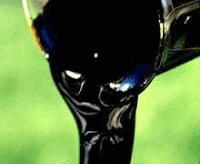Syncrude Canada Ltd., a consortium of Canadian oil sands developers, provides research support to the University of Alberta “equivalent to 10% of Syncrude’s annual internal research budget,” according to the FP article. The company also provides significant support to other institutions around Canada. Syncrude holds 21 active patents, according to its web page. These include eight US patents issued from November 2009 through April 2012. None of these eight were issued under the USPTO Green Technology Pilot Program. They include inventions pertaining to bitumen and thermal recovery from oil sands, bitumen treatment methods, and water treatment, among others.
Syncrude supports projects at the University of Calgary as well. These include evaluating the nature of small earthquakes within oil and gas reservoirs, which has implications for hydraulic fracturing (see earlier Inkling posts here, here, and here). Another project examines the application of biology to improve the recovery of petroleum products from oil sands. We’ve looked previously at using biology to reclaim uranium mines.
University research, and the commercialization of inventions that emerge from that research, is big business in Canada and the US. In 2009, the top five US research universities in terms of their total research expenditures were:
- Johns Hopkins University – $1.9 billion
- University of Michigan - Ann Arbor – $1 billion
- University of Wisconsin - Madison – $0.9 billion
- University of California - San Francisco – $0.9 billion
- University of California - Los Angeles – $0.9 billion
During the same period, the Association of University Technology Managers (AUTM) reported that university research organizations filed 18,214 total U.S. patent applications and were granted 3,417 issued patents.
